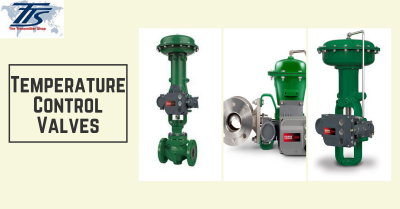
Maximize Power Financial Savings and Convenience With Advanced Structure Automation Controls
In the realm of modern-day design and center management, the assimilation of advanced building automation regulates stands as a critical advancement. By using the power of automation, structures can adapt, react, and evolve in methods that were once unbelievable.
Power Performance Perks
Power performance advantages can significantly reduce power usage and operational costs in structures. Energy-efficient systems, such as innovative structure automation controls, can enhance the use of resources like illumination, cooling, and heating, leading to lower power expenditures over time.
In addition, boosted power effectiveness can prolong the life-span of building devices and systems. By operating a lot more effectively, a/c systems, lighting fixture, and other building components experience less wear and tear, leading to lowered upkeep and substitute costs. Additionally, energy-efficient buildings often regulate greater residential or commercial property values and rental prices, offering long-term financial advantages to owners.
Moreover, energy performance can boost owner convenience and productivity. Effectively regulated interior atmospheres with optimum lights and thermal problems develop an even more enjoyable and conducive work space, leading to enhanced worker contentment and efficiency. In general, the energy effectiveness advantages connected with sophisticated building automation controls are complex, incorporating cost savings, environmental stewardship, and owner well-being.
Improved Convenience Control
Enhancing comfort control in structure atmospheres needs a sophisticated assimilation of innovative automation systems for ideal resident well-being. By utilizing innovative structure automation controls, facilities can tailor the interior atmosphere to fulfill the certain needs and preferences of owners. control valves.
Improved convenience control surpasses fundamental temperature level modifications. It consists of attributes such as personalized settings, tenancy sensing units, and all-natural light utilization to develop a receptive and vibrant environment. By integrating these advanced controls, structures can not just enhance convenience however additionally boost power effectiveness by optimizing system procedures based on real tenancy and usage patterns. Eventually, focusing on occupant convenience through innovative automation systems brings about a much more enjoyable and much healthier indoor environment.
Operational Efficiency Improvements

In addition, the execution of real-time tracking and analytics devices allows structure operators to recognize energy inefficiencies and functional anomalies promptly. By continually keeping track of energy usage patterns and system efficiency metrics, changes can be made in real-time to maximize energy usage and ensure peak operational efficiency. control valves. Furthermore, incorporating demand reaction methods into building automation controls can even more boost operational performance by dynamically changing power usage based on grid conditions and pricing signals
Indoor Environment Optimization
Reliable indoor environment optimization is an essential aspect of building automation controls, making certain owners' comfort and health while making best use of energy cost savings. By using innovative sensors and controls, constructing automation systems can continuously readjust and keep track of temperature level, moisture levels, air high quality, and ventilation to develop an optimal interior environment. Maintaining comfy and consistent conditions not just improves occupant contentment but also increases productivity and general wellness.
Indoor climate optimization likewise plays a crucial duty in energy effectiveness. By fine-tuning home heating, air conditioning, and air flow systems based on real-time data and occupancy patterns, constructing automation controls can considerably minimize power intake - control valves. As an example, applying strategies such as demand-controlled air flow and thermal zoning can help decrease energy waste while guaranteeing that each area of the structure obtains the essential conditioning.

Lasting Environment Development
Building automation manages not just maximize indoor environment conditions for power performance and occupant convenience yet additionally lay the structure for developing a sustainable atmosphere via tactical administration of systems and sources. By incorporating innovative structure automation innovations, such as sensing units, actuators, and intelligent software, centers can check and readjust energy use in real-time to minimize waste and lower their carbon impact. These systems allow predictive maintenance, determining possible issues prior to they escalate and optimizing tools performance to improve longevity and efficiency.
Moreover, lasting environment development extends beyond energy monitoring to incorporate water preservation, waste decrease, and indoor air high quality enhancement. Building automation controls can manage water use, discover leakages, and guarantee correct garbage disposal methods, adding to general sustainability efforts. Furthermore, by keeping track of and managing air flow and filtration systems, these technologies improve resident health and wellness and performance while decreasing energy usage related to heating and cooling procedures.
Final Thought
In conclusion, advanced building automation regulates offer significant benefits in regards to power cost savings, comfort control, operational performance, interior her response climate optimization, and creating a sustainable environment. By executing these controls, buildings can achieve optimum efficiency while lowering power intake and enhancing resident comfort. It appears that the usage of sophisticated automation modern technology is essential in boosting structure efficiency and developing an extra lasting future.
Power effectiveness benefits can significantly decrease energy consumption and operational prices in structures. Generally, the power effectiveness benefits associated with sophisticated structure automation controls are diverse, including price financial savings, ecological stewardship, and occupant wellness.
Furthermore, incorporating demand feedback techniques into building automation controls can better enhance operational efficiency by dynamically readjusting power usage based on grid conditions and prices signals.
Building automation controls not only optimize indoor climate conditions for energy effectiveness and resident comfort but likewise lay the foundation for producing a sustainable atmosphere through tactical management of systems and resources.In final thought, progressed structure automation regulates deal considerable benefits in website link terms of energy savings, comfort control, operational efficiency, indoor climate optimization, and creating a sustainable environment.